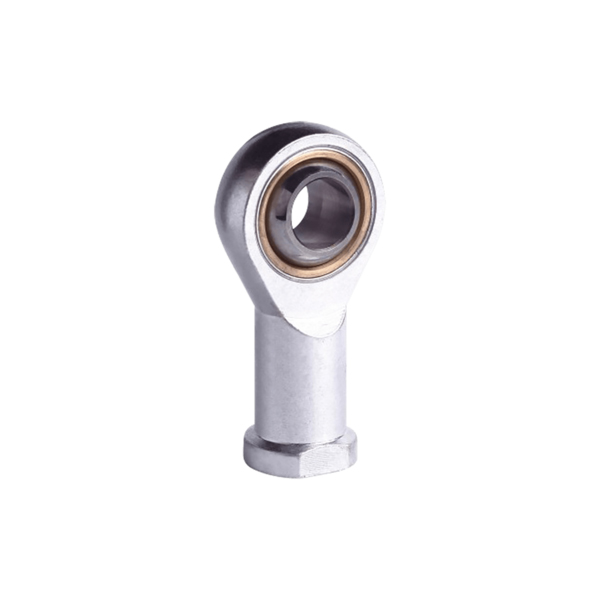The relationship between spherical bearings and ordinary bearings
2025-09-29
Bearings are a crucial component in modern mechanical equipment. Their primary function is to support rotating parts, reduce friction during movement, and ensure rotational accuracy. There are a wide variety of bearing types, categorized by structure, operating mode, and manufacturing materials. Spherical plain bearings, however, are simpler in structure than rolling bearings, primarily consisting of an inner ring with an outer spherical surface and an outer ring with an inner spherical surface. Spherical plain bearing types are also less complex than rolling bearings, primarily categorized by load direction or nominal contact angle. So, are there any differences in installation between bearings and spherical plain bearings?
Spherical plain bearings are a special type of sliding bearing. Their structure is simpler than rolling bearings, primarily consisting of an inner ring with an outer spherical surface and an outer ring with an inner spherical surface. They can withstand heavy loads, and depending on their type and structure, they can withstand radial loads, axial loads, or combined radial and axial loads. Spherical plain bearings are generally used for low-speed oscillating motion . Because their sliding surfaces are spherical, they can also tilt within a certain range . They can also function properly even with significant misalignment between the bearing shaft and the bearing housing bore.

1. Bearing Installation Methods:
Cold Installation: Bearings should be installed in a dry, dust-free area, away from equipment that generates metal chips and dust. When installation is necessary in a complex environment, contamination should be minimized. Depending on the bearing type and size, mechanical, heating, or hydraulic methods should be used. When installing small bearings with a less-tight fit, a sleeve can be used to gently hammer the sleeve into position. The hammering should be applied evenly to the bearing rings to prevent tilting or skewing. Most bearings are installed using the press-fit method. If the inner and outer rings of a bearing are to be installed simultaneously on a shaft and in a housing, the pressure applied to both rings must be equal and aligned with the contact surface of the installation tool.
Hot Installation: Larger bearings cannot generally be installed without heating the bearing or housing, as the force required for installation increases with size. The temperature difference between the bearing rings and the shaft or housing required for hot installation depends primarily on the interference fit and the diameter of the bearing fit. Open bearings should not be heated to temperatures exceeding 120°C. Heating bearings with seals and shields to temperatures above 80°C is not recommended (ensure the temperature does not exceed the permitted temperature of the seals and grease). When heating the bearings, ensure uniform heating and avoid local overheating.
II. Spherical Plain Bearing Installation Methods:
To achieve maximum service life and prevent premature failure of spherical plain bearings and rod ends, proper installation and cleanliness are essential.
① Bearings and rod ends should be removed from their packaging immediately before installation to avoid contamination. Bearing components that may have become contaminated by improper handling or damaged packaging should be wiped clean with a clean cloth. The sliding contact surfaces of spherical plain bearings must be matched to ensure optimal friction and wear characteristics. Therefore, any modification of the sliding contact surfaces can shorten the bearing service life. This includes cleaning the sliding contact surfaces or exposing them to solvents, detergents, oils, or similar media.
② All related components must be clean and free of burrs. Also, be sure to check the dimensions of the relevant components before beginning the installation process. Spherical plain bearings: When installing spherical plain bearings with split or split outer rings, ensure that the joints are positioned 90° to the load direction. Otherwise, service life will be shortened.
The following is a comparison of the parameters of standard bearings and spherical plain bearings.
| Property | Plain Bearing | Spherical Plain Bearing |
|---|---|---|
| Type | Point or Line Contact | Surface Contact |
| Load Capacity | For Radial and Axial Loads | Primarily for Radial Loads |
| Motion Type | Rotational Movement | Swinging or Rotational Movement |
| Self-Aligning | Poor | Excellent |
| Application | High Precision, High Speed | Low Speed, High Load |
| Maintenance | Relatively High | Relatively Low |
| Size | Standard Sizes, Wide Choice | Relatively Fixed Sizes |




